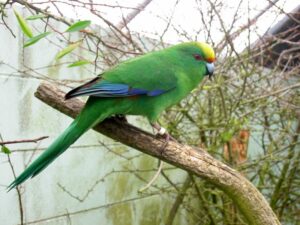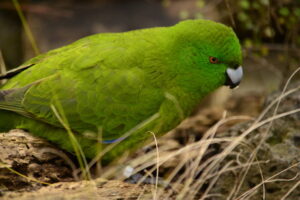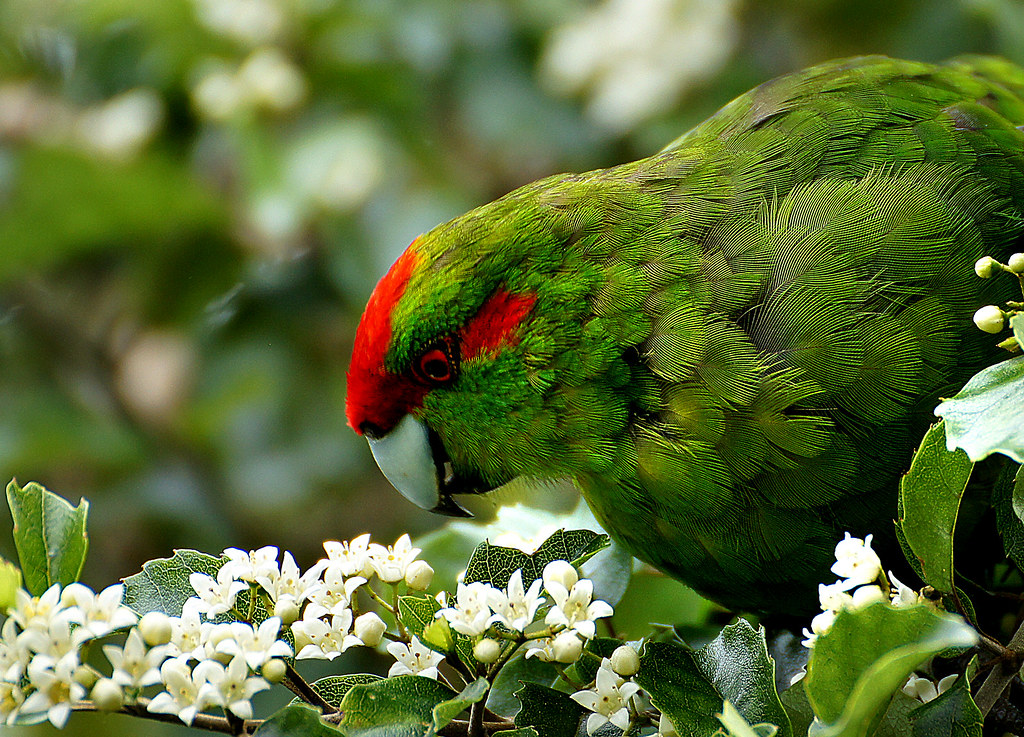Prioritising species conservation and over-stretched government funding is built upon an accurate understanding of evolutionary relationships and taxonomy. But what if that evolutionary history is wrong?
More importantly, what are the consequences for endangered biodiversity as conservation funding and resources are re-assigned? Numerous examples have come to light in recent years where genetic techniques have shown previously recognised endangered or threatened birds do not exist, such as the Cape Verde kite which was formally considered to be the world’s rarest feathered predator.

In Aotearoa New Zealand as elsewhere, a change in taxonomic status can become an emotional issue. For instance, on a recent ecotour of Akaroa Harbour with the family, our tour guide excitedly told us about conservation efforts to save Canterbury’s endangered kororā white-flippered penguin. Recent research by DNA detectives has shown this local variant is simply a colour morph of the widespread kororā little-blue penguin. It can take time for people to accept changes such as this for something considered their own.
The Department of Conservation Te Papa Atawhai does not have enough government funding to save all our unique taonga species from extinction. Kākāriki (Cyanoramphus parakeets) are one of our iconic avian groups and are spread throughout the New Zealand region, including the far-flung Rangitāhua Kermadec, sub-Antarctic and Rēkohu Chatham Islands. While some kākāriki are of less conservation concern, kākāriki karaka the orange-fronted parakeet (C. malherbi) is nationally critical and the subject of intense conservation efforts as highlighted in the recent Fight for the Wild documentary. There have been years of heated debate as to its taxonomic status: was it a distinct species or just a colour morph of kākāriki kowhai the yellow-crowned parakeet (C. auriceps)? Likewise, the nationally endangered Forbes’ parakeet (C. forbesi) would have become extinct through hybridisation with the Chatham Islands red-crowned parakeet (C. novaezelandiae chathamensis) was it not for the efforts of the Department of Conservation.
The whakapapa and taxonomy (the science of naming biodiversity) of kākāriki were seemingly resolved over 20 years ago using the fast-evolving mitochondrial DNA control region. This work established, for example, that kākāriki originated in New Caledonia around 2.3 million years ago (the closest relatives of kākāriki are the Horned and Ouvéa parakeets Eunymphicus spp.) and radiated into Aotearoa and the surrounding islands only 450,000-600,000 years ago – just the blink of a geological eye. Forbes’ and orange-fronted parakeets were shown to be distinct from the yellow-crowned parakeet, and several insular island populations of kākāriki whero the red-crowned parakeet (nominate C. novaezelandiae) were actually distinct species (e.g. Norfolk Island parakeet C. cookii). My own research into the kākāriki on the sub-Antarctic Motu Maha Auckland Islands has also contributed to our understanding of the evolutionary history of this remarkable group.

I’m sitting in the lounge of the late Rowley Taylor (who passed away just before the current COVID19 lockdown) with Bruce Thomas. Rowley and Bruce are famous in New Zealand conservation circles as having pioneered rat eradication on islands, getting rid of these pests from the rugged Kā Huruhuru-o-koekoeā Breaksea Island at the mouth of Te Puaitaha Dusky Sound in Te Rua o te Moko Fiordland in the face of stiff opposition from the newly formed Department of Conservation. I was doing my Masters at Te Herenga Waka Victoria University of Wellington on kākāriki and Bruce had taken me to meet Rowley as he had done some of the pioneering work on kākāriki evolutionary relationships. Over numerous memorable visits and countless cups of strong tea, we’d talk about kākāriki, my observations of them on field trips to the Kermadec and sub-Antarctic islands, and what I’d found in museum basements around Aotearoa. Rowley’s knowledge was phenomenal, built up over years of field research and observation. He’d disappear into his office and come out with historical papers (including many in French or German), notebooks (which are amongst some of the most treasured scientific possessions I still use today), and even the odd pickled kākāriki, in answer to my many questions.
These wonderful visits with Bruce to Rowley’s fulfilled my curiosity as only scientific mentors could and taught me to question everything – a healthy attitude to have in science. I developed doubts over the reliability of the whakapapa of kākāriki that had been reconstructed from their genes, and the consequent taxonomy including: did ‘yellow-crown’ morphology evolve twice in Forbes’ and yellow-crowned parakeets, is Reischek’s parakeet (C. hochstetteri) on Moutere Mahue Antipodes Island the most closely-related species of the orange-fronted parakeet, and why were there two genetic lineages of New Zealand red-crowned parakeet (C. n. novaezelandiae) that were as divergent from each other as other accepted kākāriki species? I distinctly remember my Masters supervisor Geoff Chambers and myself debating my latest doubts based on results from historical kākāriki museum skins over more tea and biscuits.

Birds, especially parrots, are known to have gene duplications within the mitochondrial genome, including the control region. These duplications range from nearly identical to differing from the original sequences by as much as 80%. Contrary to previous assertions of a single control region in kākāriki (i.e. no duplication), new preliminary modern and ancient DNA data indicates kākāriki do in fact have a duplicated control region. The vital questions are, what is the nature of the duplication, how divergent are the two control regions, and has a mix-up of two divergent control regions been used previously to infer kākāriki evolution and taxonomy? Answering these questions could have serious implications for the conservation management of kākāriki such as: did kākāriki originate in New Caledonia, what is the bird we call orange-fronted parakeet in the field (is it a distinct species or a colour morph), and is Forbes’ parakeet a unique species or a subspecies of yellow-crowned parakeet? More disturbingly, were the appropriate kākāriki hybrids on the Chatham Islands culled to save Forbes’ parakeet? One of the genetic tests to determine hybrids was based on the assumption of a single control region. Previous research, including my own, interpreted what the strings of the genetic code were telling us about the biological heritage of kākāriki using the best data available at the time. Our understanding of the natural world changes with new data and this is what’s happening now. That’s science for you.
Now some 15 years later I’m revisiting these charismatic and chatty taonga that started me on my scientific career. With generous funding from the Birds New Zealand Research Fund and the New Zealand Parrot Trust, our research will characterise the control region duplications within kākāriki, and use newly developed genomic approaches to reconstruct the accurate whakapapa (and taxonomy) of Cyanoramphus, including for living and extinct species that have not been genetically tested. I was just about to ring Bruce and Rowley about this funding when the call came that Rowley had passed away. Our data, combined with external kākāriki morphology (e.g. colouration) and ecology, will also allow us to determine what role hybridisation has played in the recent evolutionary history of Cyanoramphus. To date, conservation management decisions for kākāriki (and other New Zealand birds) have been based on little genetic data.

This collaborative (including scientists from the Te Whare Wānanga o Otāgo University of Otago, Te Kunenga ki Pūrehuroa Massey University, and the team at the British Museum of Natural History led by Alex Bond and Martin Stervander) and multifaceted approach will provide vital data to help prioritise species conservation funding and inform evidence-based conservation management of these important New Zealand taonga.
I’m sitting on the side of the track on Matiu Somes Island during fieldwork for my Masters watching red-crowned parakeets sliding down the corrugated tin roof of a shed and excitedly chatting away like a bunch of children as I puzzle over their evolution. Maybe now, with memories of enjoyable scientific debates with Rowley coming to mind, we can finally solve the riddle of kākāriki evolution. This one’s for you Rowley.

